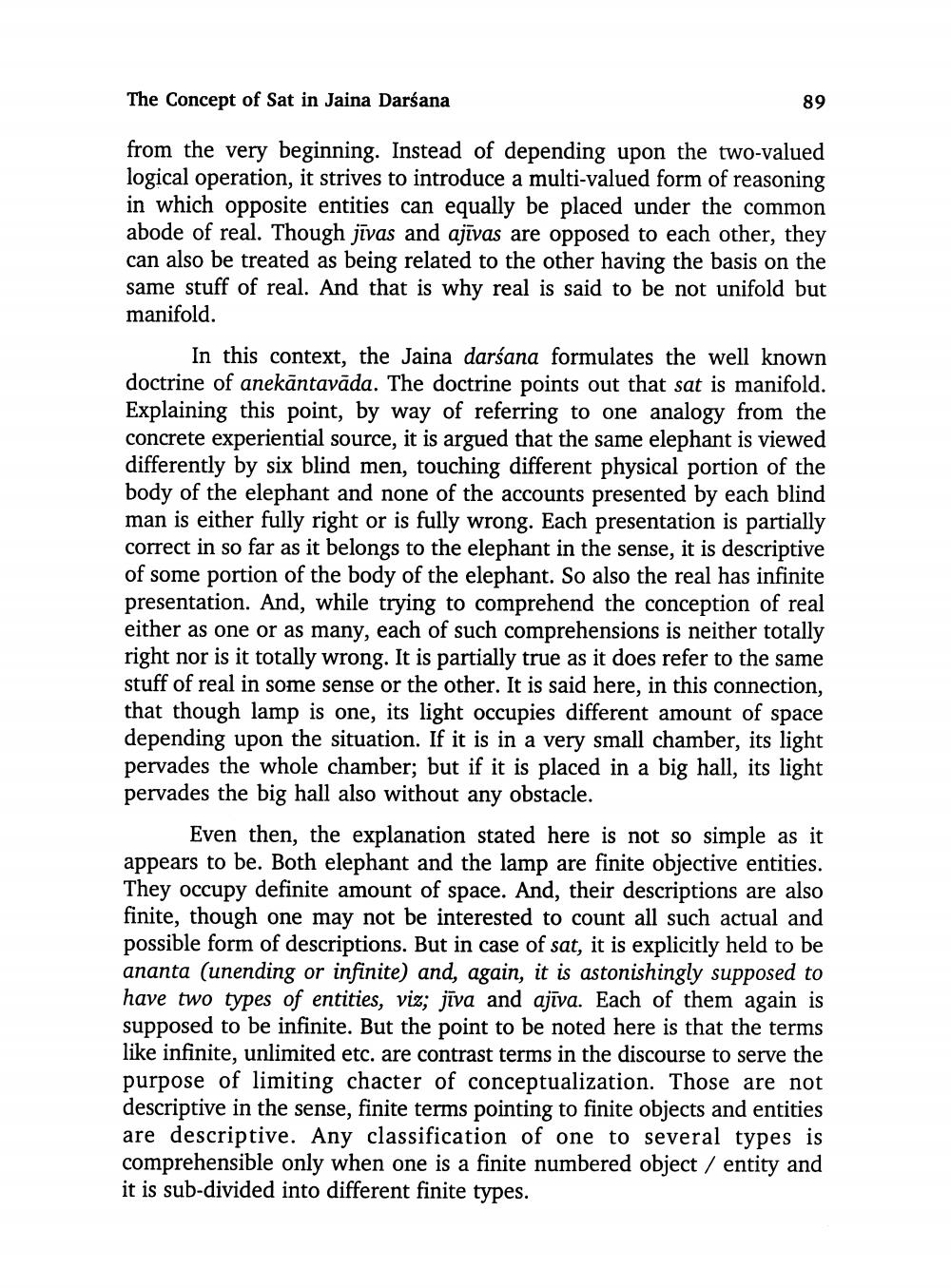________________ The Concept of Sat in Jaina Darsana 89 from the very beginning. Instead of depending upon the two-valued logical operation, it strives to introduce a multi-valued form of reasoning in which opposite entities can equally be placed under the common abode of real. Though jivas and ajivas are opposed to each other, they can also be treated as being related to the other having the basis on the same stuff of real. And that is why real is said to be not unifold but manifold. In this context, the Jaina darsana formulates the well known doctrine of anekantavada. The doctrine points out that sat is manifold. Explaining this point, by way of referring to one analogy from the concrete experiential source, it is argued that the same elephant is viewed differently by six blind men, touching different physical portion of the body of the elephant and none of the accounts presented by each blind man is either fully right or is fully wrong. Each presentation is partially correct in so far as it belongs to the elephant in the sense, it is descriptive of some portion of the body of the elephant. So also the real has infinite presentation. And, while trying to comprehend the conception of real either as one or as many, each of such comprehensions is neither totally right nor is it totally wrong. It is partially true as it does refer to the same stuff of real in some sense or the other. It is said here, in this connection, that though lamp is one, its light occupies different amount of space depending upon the situation. If it is in a very small chamber, its light pervades the whole chamber; but if it is placed in a big hall, its light pervades the big hall also without any obstacle. Even then, the explanation stated here is not so simple as it appears to be. Both elephant and the lamp are finite objective entities. They occupy definite amount of space. And, their descriptions are also finite, though one may not be interested to count all such actual and possible form of descriptions. But in case of sat, it is explicitly held to be ananta (unending or infinite) and, again, it is astonishingly supposed to have two types of entities, viz; jiva and ajiva. Each of them again is supposed to be infinite. But the point to be noted here is that the terms like infinite, unlimited etc. are contrast terms in the discourse to serve the purpose of limiting chacter of conceptualization. Those are not descriptive in the sense, finite terms pointing to finite objects and entities are descriptive. Any classification of one to several types is comprehensible only when one is a finite numbered object / entity and it is sub-divided into different finite types.




